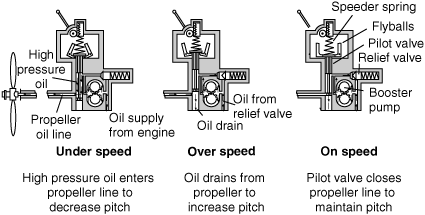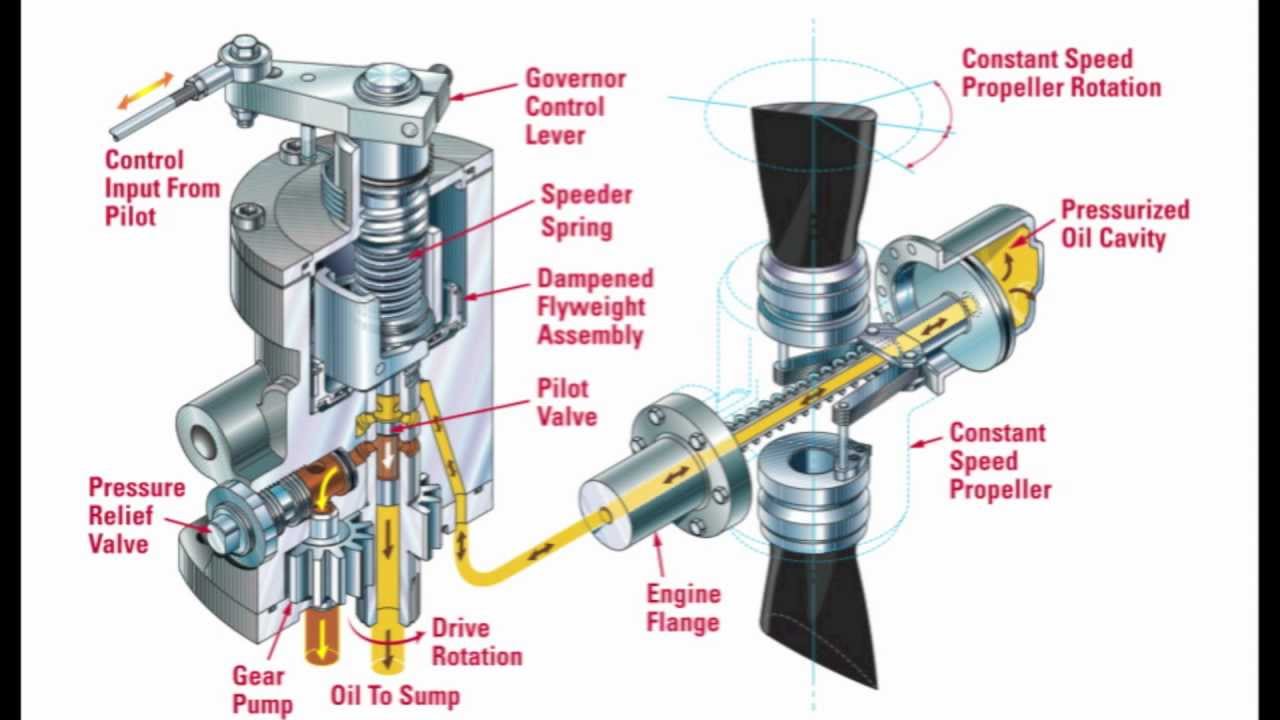I review how this prop works EVERY TIME I FLY! I review it when I lean it during runup at 1900 rpm 5280' altitude airport) and I review it again when I lean it at cruise.
In both instances, I lean it by drop in rpm. I pull the mixture back until the rpm drops and then push it in a bit. Good to go. I have ONE EGT, and am carbureted, with no fuel flow gauge so cant lean by EGT. Just doesnt run that way. Need injected and probes on all cylinders to do that. This airplane wont even run smoothly on peak EGT because the other cylinders are way past peak into miss firing. So you can even find peak EGT. Only way to lean it is by rpm drop, then enrichen. And we lean the heck out of everything here in Colorado. Lean for takeoff, every time.
Ive flown other airplanes that lean this way in runup.
BTW, there is way to tell if I am at the full flat stops at runup. Pull the prop knob out a bit until the rpm goes down and you KNOW you arent at the stops at 1900rpm now. Lean the same way. It governs but allows just enough rpm drop to be able to lean by rpm.
I bought this Husky from a ATP that was a long time airline pilot. I leaned it and he observed also. He say "yep, I think PIC (he was referring to the training company) had it wrong." Well I dont know about that it may be some planes do it one way and some planes do it the other.
I have flown other constant speed prop planes that worked this way. So its not just Husky. And I have flown other Huskies that work this way, so its not just MY husky.
It appears to me Hartzel does it this way so the pilot can lean by rpm drop.
My leaning technique must be ok. My first Husky engine made 3000 hours without even a top. Never even had the engine taken apart whatsoever.
In both instances, I lean it by drop in rpm. I pull the mixture back until the rpm drops and then push it in a bit. Good to go. I have ONE EGT, and am carbureted, with no fuel flow gauge so cant lean by EGT. Just doesnt run that way. Need injected and probes on all cylinders to do that. This airplane wont even run smoothly on peak EGT because the other cylinders are way past peak into miss firing. So you can even find peak EGT. Only way to lean it is by rpm drop, then enrichen. And we lean the heck out of everything here in Colorado. Lean for takeoff, every time.
Ive flown other airplanes that lean this way in runup.
BTW, there is way to tell if I am at the full flat stops at runup. Pull the prop knob out a bit until the rpm goes down and you KNOW you arent at the stops at 1900rpm now. Lean the same way. It governs but allows just enough rpm drop to be able to lean by rpm.
I bought this Husky from a ATP that was a long time airline pilot. I leaned it and he observed also. He say "yep, I think PIC (he was referring to the training company) had it wrong." Well I dont know about that it may be some planes do it one way and some planes do it the other.
I have flown other constant speed prop planes that worked this way. So its not just Husky. And I have flown other Huskies that work this way, so its not just MY husky.
It appears to me Hartzel does it this way so the pilot can lean by rpm drop.
My leaning technique must be ok. My first Husky engine made 3000 hours without even a top. Never even had the engine taken apart whatsoever.
Last edited:






